Efforts to predict a molecule’s scent and to build artificial noses are progressing despite a lack of knowledge and disagreements within the olfactory community, finds Andy Extance
In the wake of the discovery of olfactory receptor (OR) proteins in 1991 – which would win a Nobel prize in 2004 – Luca Turin smelled an opportunity. He had immersed himself in the topic since childhood and would publish a guide to perfumes in 1992. Following the OR discovery and building on ideas from over 50 years before, Turin, now at the University of Ulm, Germany, developed a controversial hypothesis apparently predicting how molecules smell from their structure. Over nine years working for US start-up Flexitral, he used the idea to design many fragrance and flavour molecules, including two novel synthetic flavours that gained regulatory approval.
Yet things have not proven to be simple. Today, rather than being bathed in the flood of knowledge about how molecular structure influences smell the early 1990s seemed to promise, scientists are still chasing tantalising hints. Humans have around 400 different OR proteins, the instructions for which take up around 2% of our genes. According to Turin’s critics, that creates a system so complex it makes prediction essentially impossible · but he and others like him persist anyway. In doing so they are learning lessons not only about how to delight our noses, but also to make devices that ‘smell’ individual molecules from a background of millions.
Generally in biology, receptor proteins recognise ligand chemicals’ shape and composition. Turin believes that this type of interaction can be ignored when considering smell. Instead, he thinks ORs distinguish molecules by their bond vibrations, which explains why molecules with similar structures can have very different aromas. He likens what’s happening in ORs to vibrational spectroscopy, suggesting that when odorant molecules are present, electrons can tunnel through them from one part of the protein to another.
For 40–50 years many people have tried to make sensors that are specific to a particular chemical
Though no-one has yet directly observed electrons flowing across ORs, he directs people to the smell evidence. ‘This idea correctly predicts that the B–H bond, the only bond in nature that vibrates at a frequency close to that of S–H, should confer a unique sulfuraceous smell to boranes,’ Turin says. And some boranes do have a sulfur-like whiff to them. ‘This is trivially explained by vibrations and utterly baffling for shape. The predictive ability of smell character from shape is nil.’
The vibrational hypothesis should mean people smell the difference when molecules have hydrogen atoms replaced with their heavier deuterium isotope. In acetophenone, which has only eight hydrogens to exchange, Turin’s critics found they can’t– something Turin has confirmed.1But more recently Turin and his colleagues sniffed out a marked odour change when the 28 hydrogens in the musk cyclopentadecanone were replaced with deuterium.2
How do I smell?
Despite its successful predictions, many in the olfactory community dispute this vibrational hypothesis. Barry Ache from the University of Florida, US, underlines it is ‘yet to be proven’. He is working on a more biologically-focussed – more widely endorsed – explanation for how we identify odours called the olfactory code. ‘We don’t know for sure but the working hypothesis is that the ability to distinguish one odour from another is based on a combinatorial code,’ Ache says.
We have hundreds of thousands of olfactory neurons in our noses, each with just one OR, equating to around 1000 ORs of each of the roughly 400 different types. ‘The idea is that you don’t have one detector for one odour, many detectors respond to a given odour but with different tuning,’ Ache says. He believes that the unique pattern of OR activations is responsible for what we smell. However it’s not yet known where in the neural pathway this combinatorial code is recognised. It’s ‘probably true’ that it’s a complex process distributed widely through the olfactory nerves and brain, Ache notes.
‘The biological system uses sensors that aren’t very good at all,’ adds Krishna Persaud from the University of Manchester, UK. ‘They have very broad specificity, but use overlap between one sensor and another to extract information with very high selectivity.’ Mimicking this natural design has helped improve the performance of gas and chemical sensors, says Persaud. ‘For 40–50 years many people have tried to make sensors that are highly specific to a particular chemical. They’ve failed miserably because they are also sensitive to different compounds.’
Persaud has emulated this natural olfactory combinatorial code using large numbers of organic conducting polymer sensors whose electrical conductance changes when exposed to gas or vapour. His team crams 4000 electrodes onto a 2cm × 2cm array, coating zones with differing materials. ‘Modifying them makes them more or less selective to groups of chemicals: ketones, alcohols, aromatics and so on,’ he explains. ‘You extract a signal from each element in an array, then compare the patterns to something you already know. Looking at overlap in the responses between different sensors we can achieve very high levels of discrimination. This enables small devices for real-time sensing for quality control, environmental monitoring or to signal alarms.’
Common scents
Directly and closely examining ORs in biological systems is difficult due to their number and distribution in olfactory organs, explains Edith Pajot-Augy from the French National Institute of Agronomic Research. Her team has therefore genetically engineered ORs into yeast cells, where they can traffic to the cell surface, potentially making them easier to isolate and examine. However, no-one has yet been able to produce an OR protein crystal, and therefore scientists lack the vital information x-ray diffraction can provide about their structure. That data would be useful for exploring how smell molecules fit into ORs.
However, by superimposing OR protein sequences onto the structure of other receptors in the same family, Pajot-Augy and her colleagues have docked odorant chemicals into 3D computational models. ‘Since the sequences of the proteins are only 25% similar, it is necessary to use a sequence·structure alignment algorithm to avoid errors,’ she says. Results from their group and others challenge Turin’s assertions that the shape of the odorant molecule can’t be used to predict smell. ‘Many models succeeded in establishing structure·odour relationships for the most rigid molecules,’ Pajot-Augy says. With some extra steps, researchers have also found one OR type that recognises a group of odorants sharing ‘both 3D structural and perceptual qualities’, she adds.
With deciphering the sense of smell from the biochemical side presenting such serious challenges, approaching the problem from another direction has delivered surprising results. Researchers at the German Research Centre for Food Chemistry (DFA) have been hunting chemicals we smell in food for 30 years. By 2014, they had isolated odorants from 220 different foodstuffs.3
‘The number of key aroma compounds in a given food is surprisingly small, typically amounting to 10 to 20 compounds,’ highlights DFA scientist Martin Steinhaus. ‘Over the years, we realised that some compounds are very abundant among the key aroma compounds. Others are characteristic for a certain group of foodstuffs and [some] for just one single food, such as 1-p-menthene-8-thiol in grapefruit.’ Consequently 1-p-menthene-8-thiol is also known as grapefruit mercaptan, while another individualist odorant found in red and white wine, (3S,3aS,7aR)-3,6-dimethyl-3a,4,5,7a-tetrahydro-1-benzofuran-2(3H)-one, is known as wine lactone.
The DFA team separate food volatiles by gas chromatography, so that they can check to see if they smell by olfactometry · that is, using their noses. They then track down the odorants’ structures using standard analytical techniques. To measure how much is present using mass spectrometry they add a known amount of odorant with two or more hydrogens replaced by deuteriums, or carbon-12 atoms replaced by carbon-13. ‘If you know the amount of labelled compound added and determine the ratio of labelled and unlabelled compound by GC-MS, you can calculate the natural content of the unlabelled compound,’ Steinhaus explains.
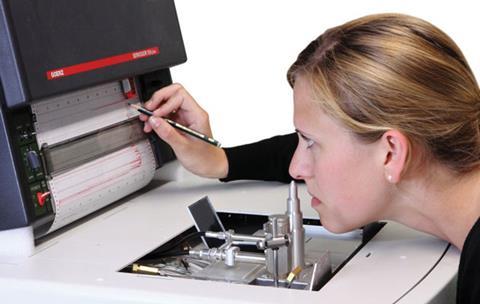
At this substitution level, Steinhaus says he’s never experienced a ‘vital odour difference’ that might support Turin’s theory. ‘However, we always try to label at the opposite end from the functional group and to limit the total number of labelled atoms to two to four to minimise potential effects of the labelling on the behaviour of the compounds,’ he adds. While therefore not supporting the vibrational theory, Steinhaus’ experience fits with the other findings that limited isotopic substitution doesn’t change a compound’s odour.
With each analysis of a new food the DFA team found ever fewer new compounds. Although there are around 10,000 volatile compounds in the foods they whiffed, their smells are dominated by just 230. They suggest the limitation could have arisen because food species and humans have evolved together, with natural selection training our ORs to recognise what’s good to eat.
Complex aromas
The way odorants mix reveals another strange aspect of our sense of smell. When adding two odorants together, researchers usually find the overall smell intensity is less than the sum of each individual component, although it is occasionally enhanced. In food aroma mixtures containing more than four components, odorants lose their individuality and produce a unique odour quality unlike any single component, Steinhaus notes. Mixing more than 30 volatiles of equal intensity spanning odour space compounds created a default ‘olfactory white’ odour, which is neither pleasant or unpleasant but could mask bad smells.
There’s evidence that this mixing phenomena might arise from competition at the OR like that between a drug and a natural ligand at receptors elsewhere, Ache explains. However, his team is on the trail of a rather different biochemical interaction. They found that even when two different odours bind to the same type of receptor, they activate different signalling pathways. ‘The first pathway involves activation of cyclic nucleotides, which has been well studied. The second is based on phospholipids.’4
Olfactory neurons detect odours and convert them to electrical signals by opening channels that allow ions to flow. Studying olfactory tissue from rats, Ache’s team has shown that blocking a type of enzyme called phosphoinositide 3-kinase (PI3K), known to be involved in many cellular functions, can enhance many odorant signals. They hypothesise that this is because the odorants would otherwise be activating PI3K, which would, in turn, interfere with opening the ion channels. That is, they would be ‘turning down’ the intensity of the nerve signal that would otherwise be sent, adding yet more complexity to how smell is encoded.

Ache sees understanding the combinatorial code as essential for reliably predicting what odour mixtures will produce, and designing better electronic noses. ‘They haven’t lived up to expectations except in very particular applications, so people have gone back to animals, even though they don’t always do what you want,’ he notes. ‘The more biologically-determined organisational principles you bring to bear the more efficient, sensitive and effective sensors you could create. The hope is someday you can have a sensor that doesn’t have animal peccadilloes but would have its capabilities.’
Pajot-Augy has worked on just such a device as a part of the EU Bioelectronic olfactory neuron device project, which concluded in 2012. Rather than simply mimicking ORs using electronics, this project sought to develop sensors that integrated ORs directly onto electronics. Her team found that if they burst open yeast cells genetically engineered to produce ORs, the cells’ membranes reformed robust spherical ‘nanovesicles’ with ORs on the membrane.5 The collaboration was also able to put these nanovesicles onto gold electrodes, making prototype e-noses that could successfully identify the presence and measure the concentration of specific odorants for use in monitoring food quality.
Snot working

One significant challenge in engineering such a sensor comes because we know little about which ORs detect which odour. So far only 42 human ORs – around 10% of the total number · have been matched with at least one odorant. The genetic engineering approach Pajot-Augy’s team use has allowed them to add to this list, a job both difficult and vital. ‘Identifying ORs able to bind a given odorant is time-consuming, but it is the first task that has to be performed if you intend to develop a biosensor based on the most relevant olfactory receptors that will provide the highest responses to the target odorant,’ she says.
Persaud agrees that some applications demand such tailor-made receptors, and adds that their abilities are difficult to replicate with just polymers or semiconductors. ‘You might want to detect one particular type of molecule against a background of millions of other types. Say somebody is carrying a bag containing a banana and explosives. Most analytical instruments will just detect the banana because the concentration of ligands is much greater. But if you had a device that could pick up one molecule present in that huge background then you’ve got a good chance of opening up brand new practical industrial applications.’
Rather than struggle with ORs, Persaud is working with olfactory binding proteins.6 ‘They’re found in the noses of all mammals, but in a different environment – more or less, in snot,’ he explains. ‘The conjecture is that they’re carrier proteins involved in taking olfactory molecules to or removing them from olfactory receptors.’
If electronic noses become common, Persaud is hopeful the knowledge will help produce systems to design odours. ‘We’re just measuring the molecule – you end up with patterns of information that will allow you to describe it. It’s like boiling point, colour, NMR or IR spectra – these are descriptors of the molecule. Here we’re creating much the same kind of information but from a different perspective.’ Descriptors for known odorants should help make predictions for new molecules and mixtures, he suggests.
Electronic noses haven’t lived up to expectations
Turin underlines that to better foretell new molecules’ odour, he believes the link to spectroscopy is stronger than just an analogy. ‘The prediction of smell character will require accurate calculation of vibrational spectra,’ he says. ‘We are not yet in a position to calculate exactly the intensity of inelastic electron tunnelling spectroscopy modes · though some progress is being made.’ Another key piece of evidence he’s trying to pin down is where in the olfactory receptor electron tunnelling might take place.
Can understanding our sense of smell bring a tangible benefit? As with all fundamental research, ultimately no-one knows. There’s an obvious need for better sensors, while odour research appeals to a flavours and fragrances industry that the market research company Freedonia Group predicts will be worth $26.5 billion (£17.2 billion) in 2016. And while the answers to many questions about smell could hold great value in these applications and elsewhere, Turin is adamant that the most important of all is: what happens when odorants are first detected? ‘We can only understand how the brain processes sensory data if we understand what the data is, and how it is encoded at the receptor level,’ he stresses.
Andy Extance is a science writer based in Exeter, UK
References
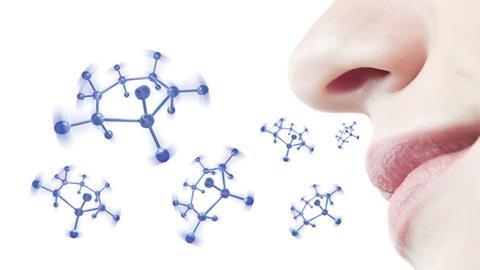
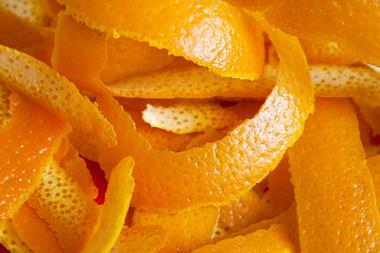
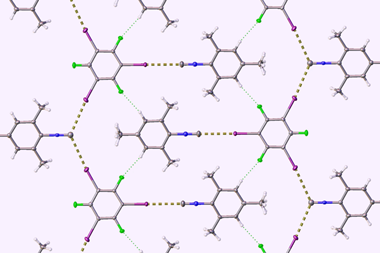
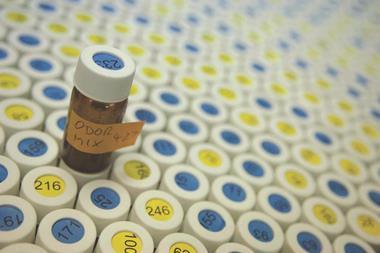
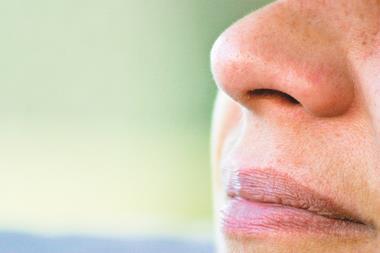








No comments yet